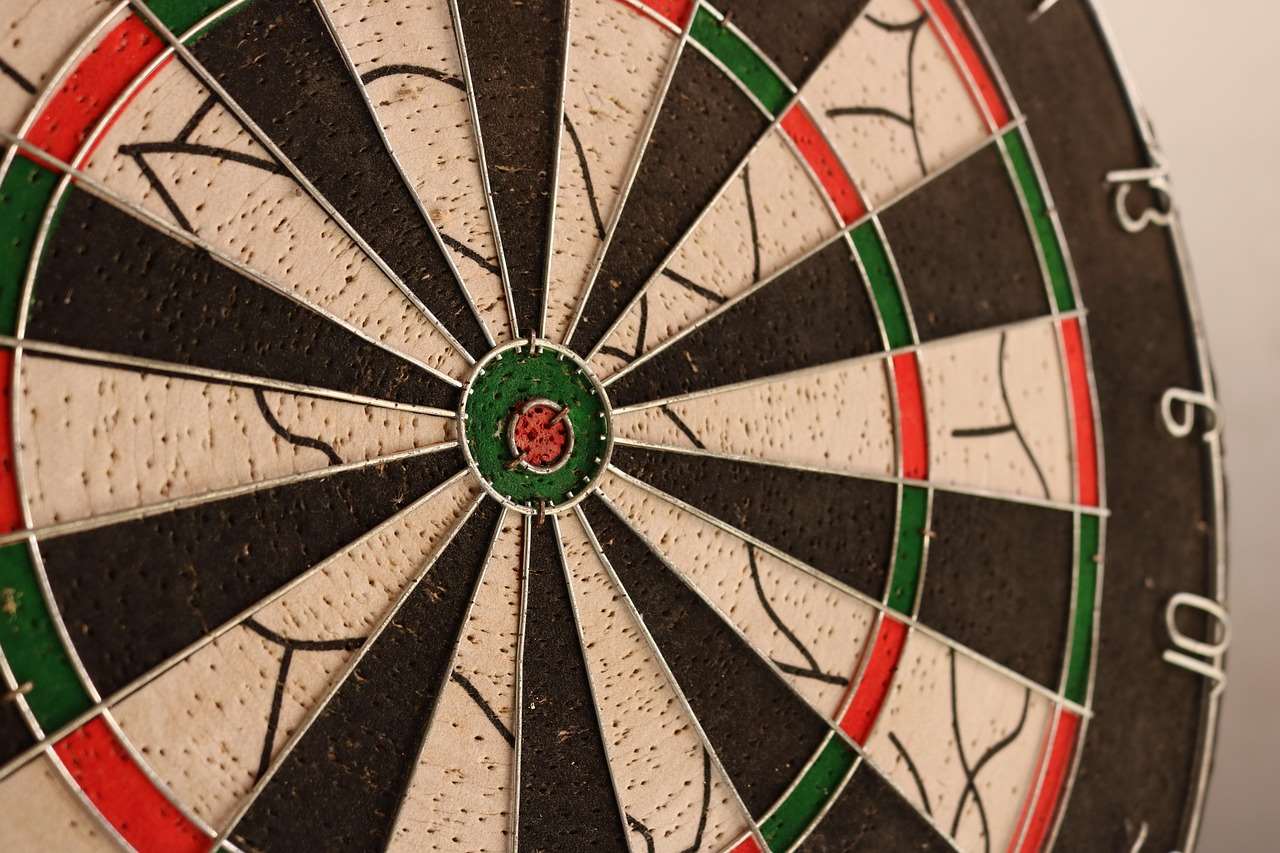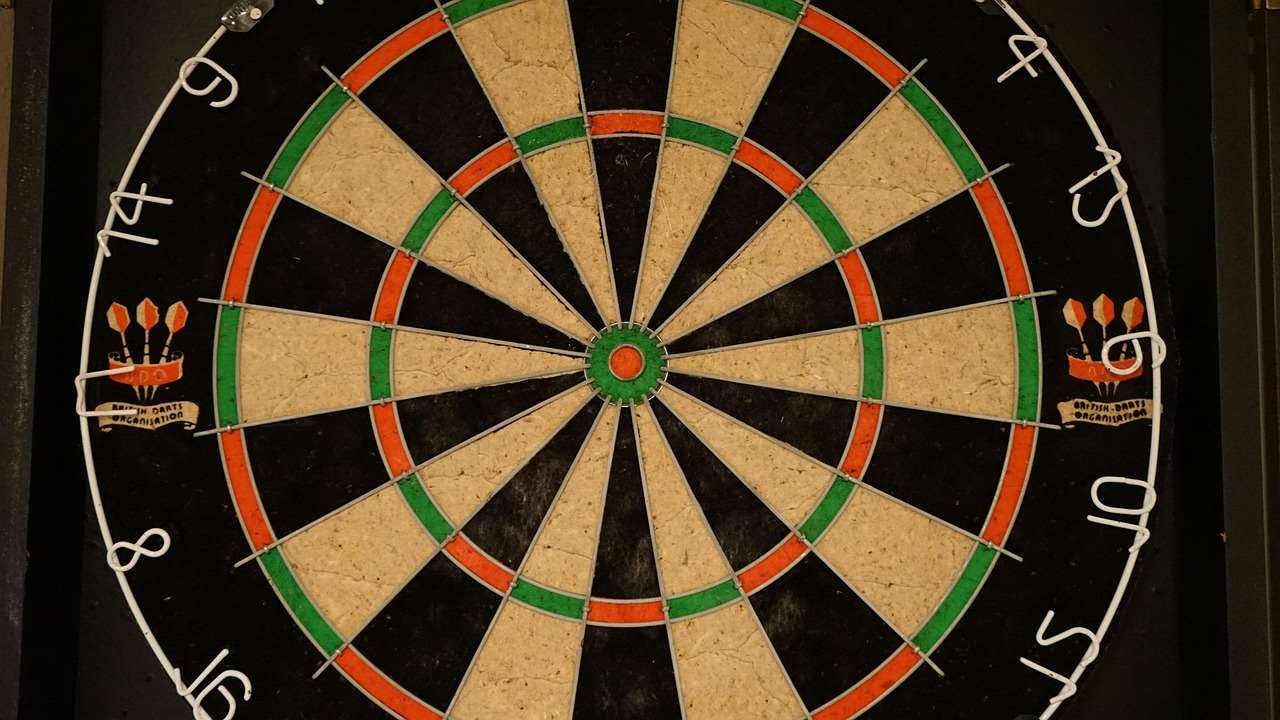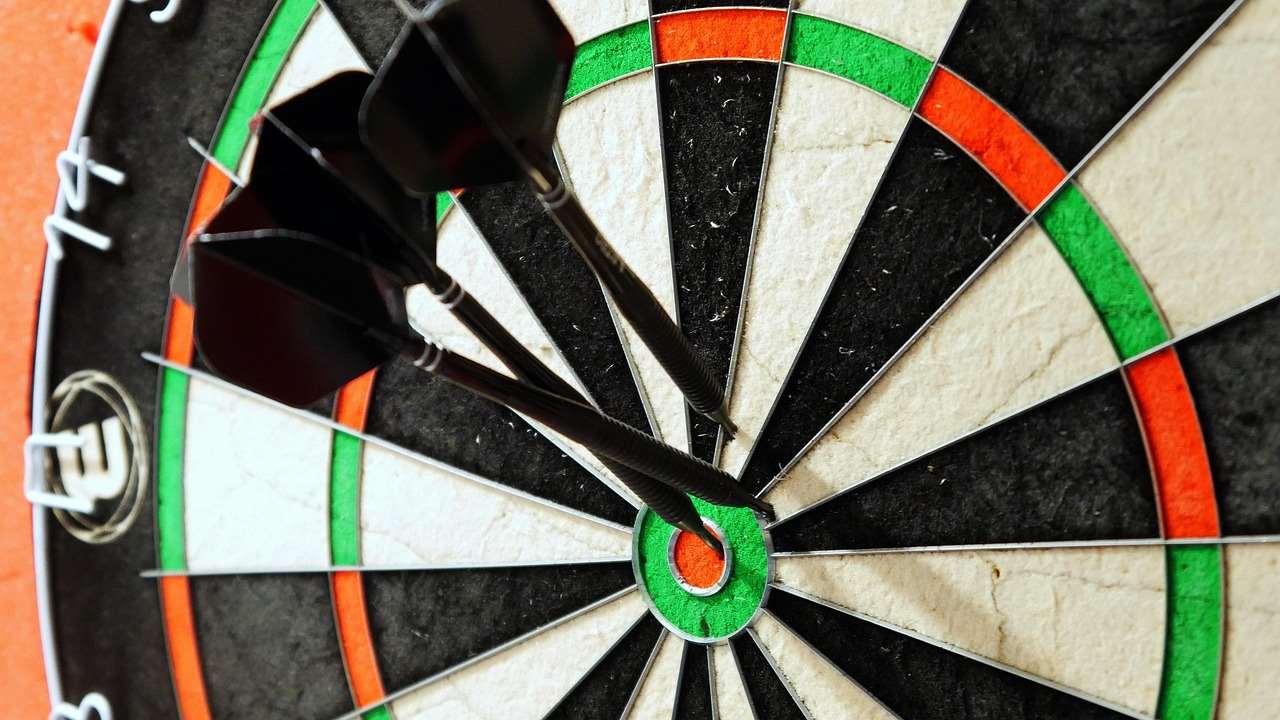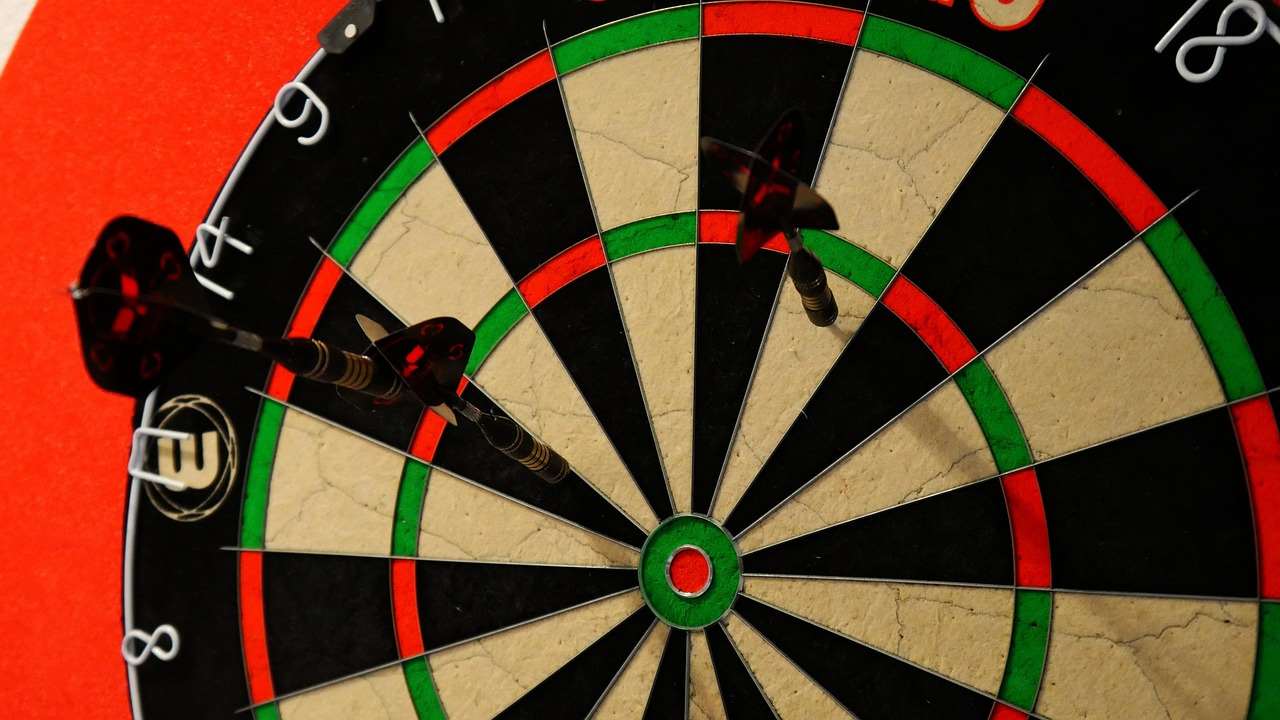The history of dart equipment repairs mirrors the evolution of the game itself, transitioning from simple fixes with readily available materials to specialized techniques for modern, high-performance equipment; this article explores that fascinating journey. We’ll delve into the materials used, the common issues faced, and how dart maintenance has transformed over time.
⚠️ Still Using Pen & Paper (or a Chalkboard)?! ⚠️
Step into the future! The Dart Counter App handles all the scoring, suggests checkouts, and tracks your stats automatically. It's easier than you think!
Try the Smart Dart Counter App FREE!Ready for an upgrade? Click above!
A Brief History Of Dart Equipment Repairs: From Pub Games to Precision

In the earliest days of darts, equipment repairs were largely improvised. Darts were simple, often handcrafted from wood and feathers, making repairs a matter of necessity and resourcefulness. The history of dart equipment repairs started with simple fixes: replacing broken flights with new feathers sourced locally, or reinforcing the wooden barrels with whatever materials were on hand. Think about it, darts were often made from repurposed items. Flights, in particular, were vulnerable and frequently needed replacing. The local pub owner or even the players themselves were responsible for these basic repairs.
The dartboards themselves were also quite rudimentary. Made from elm wood, they would splinter and crack over time. Repairs involved filling the cracks with putty or wood filler and resurfacing the board. The concept of regular maintenance was paramount to extending the lifespan of the board and keeping the game enjoyable.
The Rise of Brass Darts and Standardized Repairs
The introduction of brass darts in the late 19th and early 20th centuries marked a significant shift. Brass was more durable than wood, but it still wasn’t immune to damage. Bent points, loose flights, and worn barrels became common issues. This era saw the emergence of more standardized repair techniques. Players started using tools like pliers and files to straighten bent points. New flight materials, like paper and later celluloid, offered increased durability but still required regular replacement. You can find the Choose Best Dart Equipment with newer materials. This led to the development of replaceable flight systems, a precursor to modern dart technology. This period highlighted the importance of having a basic dart repair kit, which typically included point sharpeners and flight replacement tools.
The Modern Era: Precision and Performance

The modern era of darts is defined by precision engineering and high-performance materials. Tungsten darts, with their slim profiles and high density, are now the gold standard. However, these darts also require specialized repair techniques. The points, often made from hardened steel, can still bend or break, and the delicate flight systems are prone to damage.
Today’s dart players often rely on specialized tools and techniques for maintaining their equipment. Point replacement tools, flight punchers, and shaft tightening tools are readily available. Moreover, the availability of various flight shapes and materials allows players to customize their darts to optimize their performance and reduce the frequency of repairs.
The focus has shifted from simple fixes to preventative maintenance. Players now understand the importance of regular cleaning, tightening, and inspection to ensure their darts perform consistently. Many enthusiasts invest in high-quality dart cases to protect their equipment from damage during transportation.
Common Dart Equipment Problems and Solutions
Here’s a breakdown of common dart equipment issues and how to address them:
- Bent or Broken Points: Use a point replacement tool to remove the damaged point and insert a new one. Consider using a point sharpener regularly to maintain point grip.
- Loose Flights: Tighten the flights using a flight tightening tool. If the flights are damaged, replace them immediately. Experiment with different flight shapes and materials to find the best fit for your throwing style.
- Wobbly Shafts: Use a shaft tightening tool to secure the shafts to the barrel. If the shafts are cracked or broken, replace them. Consider using O-rings to prevent loosening.
- Worn Barrels: Clean the barrels regularly with a soft cloth and mild soap to remove dirt and grime. Avoid using abrasive cleaners, which can damage the finish.
- Dartboard Maintenance: Rotate your dartboard regularly to distribute wear evenly. If you’re using a sisal dartboard, consider moisturizing it periodically to prevent drying and cracking.

Advanced Repair Techniques and Customization
Beyond basic repairs, some dart players delve into more advanced techniques and customization. This might involve re-pointing darts with specialized point types, modifying flight shapes for enhanced aerodynamics, or even customizing the grip on the barrel. These advanced techniques often require specialized tools and a good understanding of dart mechanics.
Repointing Darts: Choosing the Right Point
Repointing darts can be a tricky process, but it’s essential for maintaining performance. Here’s a breakdown:
- Grip Points: These points have a textured surface to provide extra grip on the dartboard. They’re ideal for players who want more control.
- Smooth Points: These points offer less grip, allowing the dart to slide into the board more easily. They’re suitable for players who prefer a smoother release.
- Conversion Points: These points are designed to convert steel-tip darts to soft-tip darts.
When repointing, ensure you use a compatible point replacement tool. Follow the manufacturer’s instructions carefully to avoid damaging the dart barrel. It is worth understanding Budget vs Premium Darts Compared with these points in mind.
The Future of Dart Equipment Repairs

The future of history of dart equipment repairs is likely to be shaped by advancements in materials science and manufacturing technology. We can expect to see even more durable and customizable dart equipment, with repair techniques becoming increasingly sophisticated. 3D printing could also play a role, allowing players to create custom dart components and repair parts on demand. Furthermore, as dart equipment becomes more technologically advanced, we might see the integration of sensors and diagnostic tools that can help players identify and address potential issues proactively. The development of self-repairing materials could also be a game-changer, reducing the need for manual repairs altogether.
The evolution of dart equipment and repair techniques is a testament to the enduring popularity and increasing sophistication of the game. From simple feather replacements to advanced point customization, dart players have always found ways to maintain and optimize their equipment for peak performance. As technology continues to advance, we can expect to see even more innovative solutions for dart equipment repair and maintenance.
Maintaining Your Dartboard for Longevity
Proper dartboard maintenance is crucial for extending its lifespan and ensuring consistent play. Here are some tips:
- Regular Rotation: Rotate the dartboard regularly to distribute wear evenly across the surface. This prevents certain areas from becoming overly worn.
- Moisturizing Sisal Boards: If you have a sisal dartboard, consider moisturizing it periodically to prevent the fibers from drying out and cracking. Use a commercial dartboard moisturizer or a light spray of water.
- Removing Loose Fibers: Regularly remove any loose fibers from the dartboard surface. This prevents them from interfering with dart penetration.
- Proper Mounting: Ensure the dartboard is securely mounted to the wall. A wobbly dartboard can lead to inaccurate throws and premature wear.

Where To Find Dart Repair Tools
Finding dart repair tools is easier than ever. Most online retailers that sell dart equipment will have a section dedicated to maintenance and repair items. Local dart shops are also a great resource, as they often offer expert advice and a wider selection of specialized tools. Online forums and communities dedicated to darts can also provide valuable information and recommendations on where to find the best tools and supplies. Don’t forget to read reviews and compare prices before making a purchase.
Investing in Quality Dart Equipment
While dart repair is essential, investing in high-quality dart equipment can significantly reduce the frequency of repairs. Premium darts are typically made from more durable materials and are constructed with greater precision, making them less prone to damage. Consider Investing In Premium Dart Equipment in the long run can actually save you money on repairs and replacements. Take the time to research different dart brands and materials to find the best fit for your needs and budget.
The history of dart equipment repairs highlights how essential it is to prolong the life of your equipment. By understanding the common issues, investing in quality tools, and practicing proper maintenance techniques, you can ensure that your darts and dartboard remain in top condition for years to come. This allows you to focus on honing your skills and enjoying the game to the fullest.
Conclusion
From simple fixes with feathers and wood to complex repairs on tungsten darts, the history of dart equipment repairs reflects the evolution of the game. Understanding the common issues and utilizing the right tools are essential for maintaining your equipment and maximizing its lifespan. Regular maintenance, investing in quality equipment, and utilizing appropriate repair techniques will ensure you stay in the game longer and with improved performance. So, sharpen those points, tighten those flights, and get back to the oche!
Hi, I’m Dieter, and I created Dartcounter (Dartcounterapp.com). My motivation wasn’t being a darts expert – quite the opposite! When I first started playing, I loved the game but found keeping accurate scores and tracking stats difficult and distracting.
I figured I couldn’t be the only one struggling with this. So, I decided to build a solution: an easy-to-use application that everyone, no matter their experience level, could use to manage scoring effortlessly.
My goal for Dartcounter was simple: let the app handle the numbers – the scoring, the averages, the stats, even checkout suggestions – so players could focus purely on their throw and enjoying the game. It began as a way to solve my own beginner’s problem, and I’m thrilled it has grown into a helpful tool for the wider darts community.